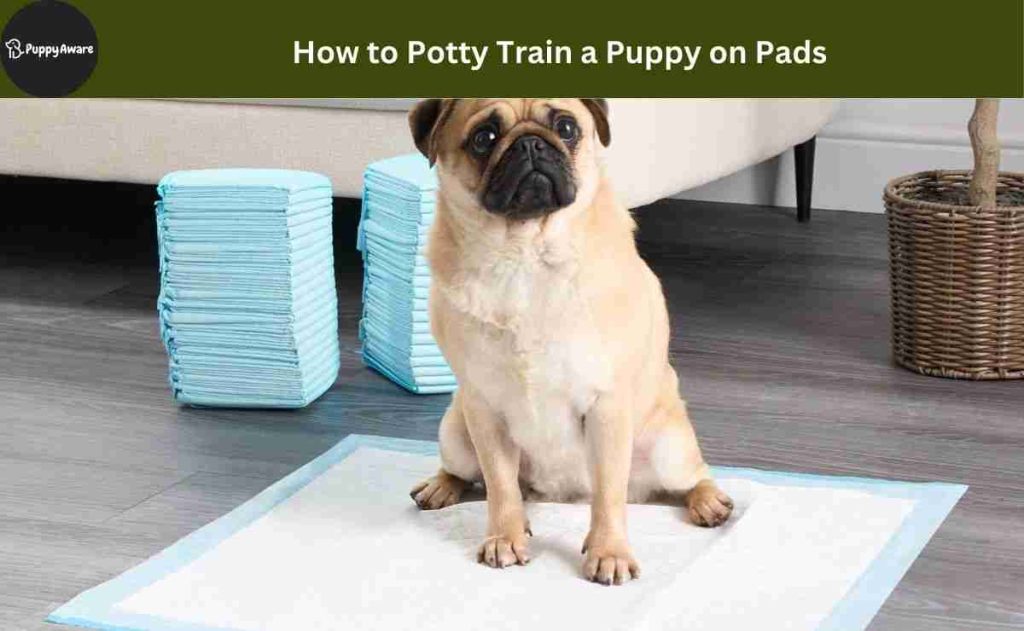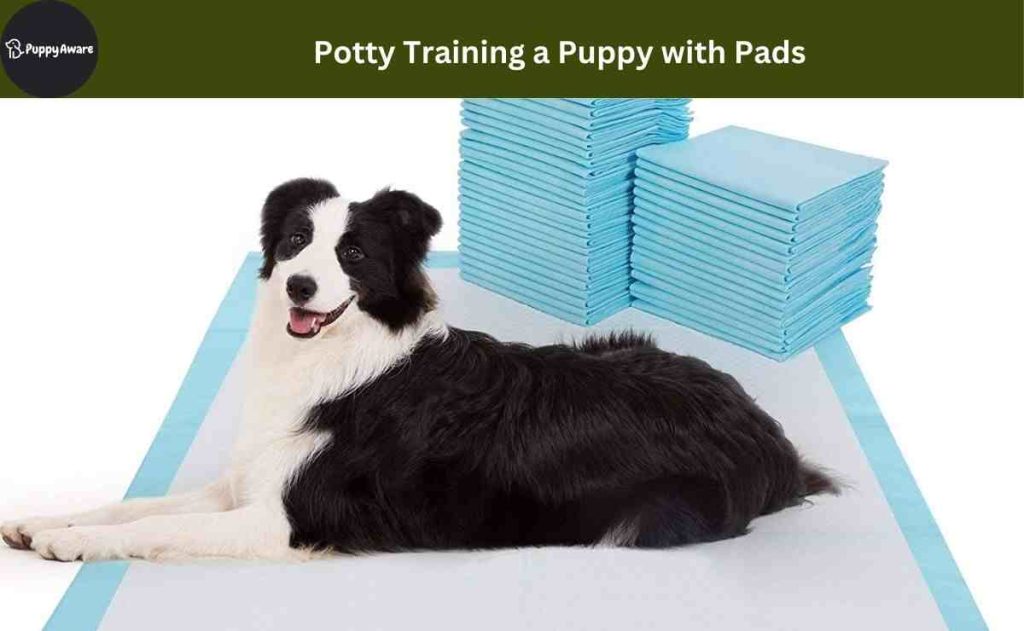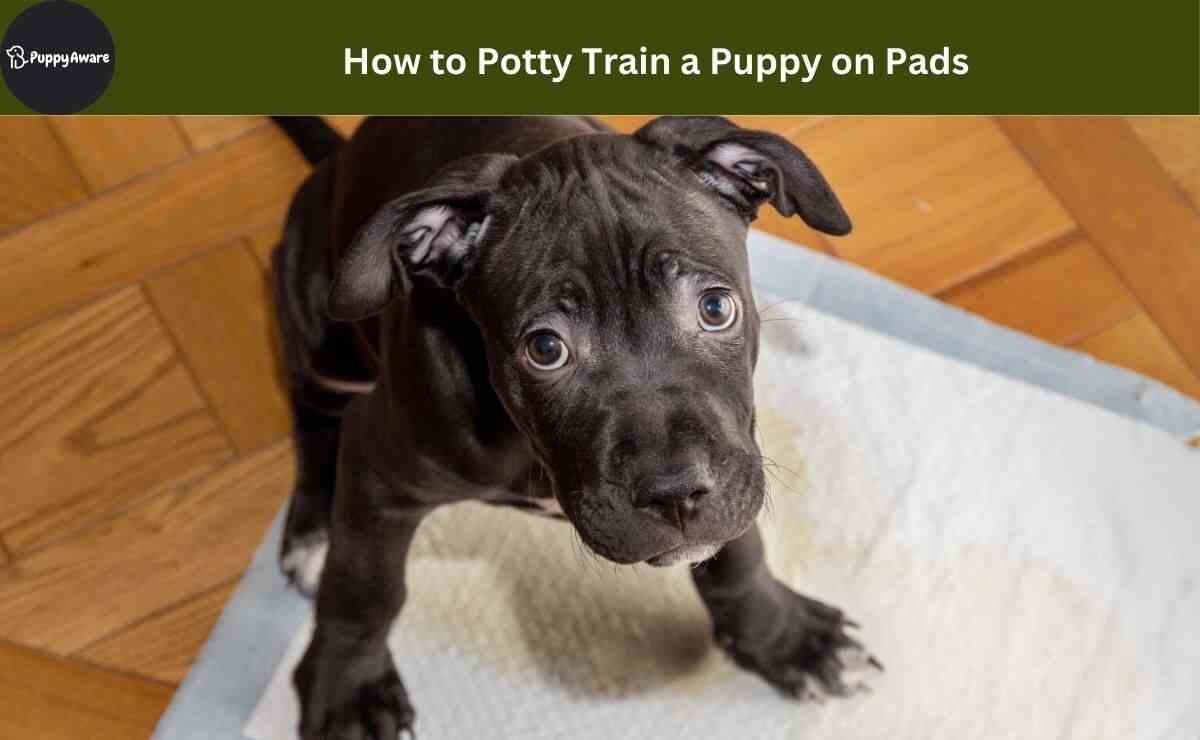Potty training a new puppy can be one of the most challenging parts of pet ownership, but using puppy pads is a practical solution for many pet parents. Whether you live in an apartment, have limited outdoor access, or want to minimize the risk of accidents in the house, training your puppy to use pads can provide convenience and flexibility.
In this guide, we’ll walk you through the entire process of potty training a puppy on pads, covering both the benefits and potential challenges, as well as step-by-step instructions and troubleshooting tips for common issues.
How to Potty Train a Puppy on Pads

Puppy pads, also called pee pads, offer a designated indoor area for your puppy to relieve themselves. They can be a temporary solution or a long-term option depending on your living situation and your dog’s needs.
Pad training is especially useful for owners who may want an indoor potty option for short-term use but can also serve as a long-term solution for small breeds or those with limited outdoor needs.
Getting Started with Pad Training: Supplies and Setup
Before beginning pad training, it’s essential to have the right supplies and to set up a designated potty area. This preparation helps reinforce consistent habits and makes the process smoother for both you and your puppy.
Essential Supplies
| Item | Purpose |
|---|---|
| Puppy Pads | Provides a specific place for your puppy to eliminate. Look for absorbent pads with odor-blocking features. |
| Enzymatic Cleaner | Essential for cleaning accidents and neutralizing odors, preventing the puppy from returning to incorrect spots. |
| Gates or Playpen | Limits your puppy’s roaming area, helping them stay close to the pad and reducing the likelihood of accidents. |
| Treats | Rewards good behavior immediately after your puppy successfully uses the pad. |
| Disposable Gloves | Useful for cleaning up any accidents off the pad. |
Setting Up the Potty Area
- Select a Designated Spot: Choose a consistent, easily accessible spot in your home for the potty pad. It’s best if this location is away from the puppy’s food and water bowls, as dogs naturally prefer to separate potty areas from eating spaces.
- Use a Playpen or Gate: Set up a small playpen around the potty area or restrict your puppy’s movement to one room initially. This setup keeps the puppy close to the pad and encourages them to use it when needed.
- Lay Out Multiple Pads at First: To maximize your puppy’s chance of hitting the pad, start with multiple pads covering a small area. As they become more accurate, you can gradually reduce the number of pads to a single one.
Puppies thrive on routine. Consistency in location and timing will help them develop reliable potty habits much faster.
Step-by-Step Guide to Potty Training on Pads

Now that your supplies are ready and the potty area is set up, it’s time to start training. Following a structured approach will help your puppy learn to use the pads consistently and reduce the chance of accidents.
1. Introduce Your Puppy to the Pad
- Show the Designated Area: Gently lead your puppy to the pad area and let them explore it. Use a specific cue word or phrase like “go potty” whenever they’re near the pad to help them associate the area with potty time.
- Encourage Familiarity: Spend a few minutes in this area with your puppy several times a day, especially after they eat, play, or wake up from a nap—these are the most common times puppies need to go.
2. Establish a Consistent Potty Schedule
- Frequent Breaks: Young puppies need regular potty breaks, often as frequently as every hour, as well as after meals and naps. The more consistent you are, the faster they’ll learn.
- Gradually Increase Time: As your puppy gets older and gains control, you can start spacing out bathroom breaks. This helps teach them to hold it for longer periods.
3. Reward Good Behavior Immediately
- Use Positive Reinforcement: When your puppy successfully uses the pad, praise them immediately with a cheerful tone, a treat, or some petting. Immediate rewards reinforce the behavior you want to encourage.
- Avoid Delayed Praise: It’s important to reward them while they’re still on the pad or just as they finish. Delaying praise, even by a few seconds, can confuse your puppy and weaken the association between the pad and the reward.
4. Address Accidents Calmly
- Redirect, Don’t Scold: If you catch your puppy having an accident, calmly interrupt them and guide them to the pad. Avoid scolding, as this can make them anxious or lead to hiding when they need to go.
- Clean Thoroughly: Use an enzymatic cleaner to remove any odors, as even faint smells can encourage repeat accidents in the same spot.
Following these steps consistently will help your puppy build a strong habit of using the potty pad. Remember, positive reinforcement and patience are essential for successful training.
Additional Tips for Successful Pad Training
- Avoid Over-Reliance on Pads: If your ultimate goal is outdoor pottying, avoid using pads exclusively for too long, as this may make the transition harder. Gradual, supervised outdoor trips should be introduced as your puppy becomes more comfortable.
- Clean Accidents Promptly: Using an enzymatic cleaner is essential to remove any lingering odors from accidents outside the pad area. This prevents puppies from marking the same spot again, reinforcing the designated pad location.
- Track Your Puppy’s Progress: Keeping a simple log of your puppy’s potty schedule, successes, and accidents can be helpful for identifying patterns. This allows you to make adjustments to the routine, ensuring consistent progress.
Troubleshooting Common Pad Training Issues

Even with a structured approach, there may be some challenges along the way. Here are common issues that can arise during pad training and solutions to help you address them.
1. Puppy Chews or Plays with the Pad
- Why It Happens: Puppies often see pads as toys, especially if they’re in a playful or teething stage.
- Solution: Use a pad holder or frame to secure the pad and make it harder to drag or chew. Redirect your puppy’s attention to a chew toy if they begin to play with the pad. Consistently redirecting can help them understand that the pad is not for play.
2. Inconsistent Pad Use
- Why It Happens: This is common if the puppy has access to a large area or isn’t clear on where they should go.
- Solution: Limit your puppy’s roaming space to a smaller area, ideally using gates or a playpen around the potty pad. As your puppy becomes more reliable, gradually expand their allowed area.
3. Accidents Outside the Pad Area
- Why It Happens: Puppies may be drawn to areas where they smell traces of previous accidents, or they may not have learned yet to associate the pad area as the only spot to go.
- Solution: Clean any accident spots thoroughly with an enzymatic cleaner to eliminate lingering odors. If accidents continue in the same area, consider blocking access temporarily until your puppy’s training is more solid.
4. Regression in Pad Training
- Why It Happens: Regression can happen if there’s a change in routine, a move to a new location, or even if the puppy feels stressed.
- Solution: Return to a strict schedule of frequent potty trips to the pad and reinforce with positive rewards. With patience, most puppies regain their training after a few days of consistency.
Pro Tip: Consistency and patience are key. Every puppy learns at their own pace, so setbacks are natural. Focus on reinforcing good behavior rather than punishing mistakes.
Transitioning from Pads to Outdoor Potty Training
Once your puppy has consistently mastered using the pad, you may decide to transition them to outdoor potty training. This process requires patience and a gradual approach to help your puppy make the connection between indoor pads and outdoor pottying.
Step-by-Step Transition Plan
- Move the Pad Closer to the Door:
- Begin by gradually moving the potty pad closer to the door your puppy will use to go outside. This helps them associate the door area with potty time.
- Make this move slowly, shifting the pad a few feet closer each day.
- Take the Pad Outside:
- Once the pad is right next to the door, try placing a pad outside in the designated potty spot.
- Take your puppy to the outdoor pad at regular potty times and use the same cue word you used indoors, like “go potty.”
- Reduce Indoor Pad Use:
- After successful outdoor trips, start removing the indoor pad or leave it down only in emergencies. Reward your puppy each time they go outside to reinforce the new routine.
- Establish a Consistent Outdoor Routine:
- As your puppy gets used to going outside, establish set times for bathroom breaks. Puppies often need to go for pottying after eating, playing, or waking up, so aim to be consistent with timing.
Tips for a Successful Transition
- Reward Outdoor Pottying Generously: Since this is a big step for your puppy, reward outdoor pottying with extra treats and praise to reinforce the behavior.
- Be Patient with Setbacks: Puppies may occasionally revert to indoor pads during the transition. Keep calm, reinforce the outdoor routine, and redirect them gently if accidents occur indoors.
Benefits of Pad Training
- Indoor Convenience: Perfect for pet owners in apartments or those with limited outdoor access, allowing puppies to relieve themselves indoors.
- Weather-Proof Option: Ideal for harsh weather conditions (e.g., snow, rain, extreme cold) when outdoor potty trips are difficult or uncomfortable.
- Flexibility for Busy Schedules: Great for owners who are out for extended hours, providing a way to prevent accidents during long periods alone.
- Ease of Use for Older or Less Mobile Owners: Pad training is a viable option for people with mobility issues or who may find frequent outdoor trips challenging.
Drawbacks to Consider
- Potential Confusion for the Puppy: Training your puppy to use pads can sometimes blur the boundary between indoor and outdoor pottying, which may delay full outdoor training.
- Possibility of Long-Term Dependence: Some puppies may become accustomed to using pads, making it harder to transition to outdoor-only pottying if that’s the goal.
- Additional Cost and Cleanup: Regularly replacing pads can add up, and they require frequent changing to keep your space odor-free.
Frequently Asked Questions (FAQs)
To help address common concerns, here are answers to frequently asked questions about potty training on pads. This section can serve as a quick reference guide as you go through the training process with your puppy.
1. How Long Does Pad Training Take?
The time it takes to fully pad-train a puppy varies, typically ranging from a few weeks to a couple of months. Factors include the puppy’s age, breed, and consistency in training.
Puppies with consistent schedules, supervision, and positive reinforcement tend to learn faster.
2. What Should I Do if My Puppy Refuses to Use the Pad?
If your puppy seems hesitant or confused about using the pad, try placing a lightly used pad (one that has a faint smell of their urine) on top of a fresh pad.
This helps reinforce that the pad is an approved potty area. Additionally, reward your puppy immediately when they use the pad successfully.
3. Should I Use Scented Pads?
Scented pads can attract puppies, making it easier for them to understand where to go. However, not all puppies respond to the scent, and some may even dislike it.
If you try a scented pad and your puppy avoids it, switch to an unscented version to see if it makes a difference.
4. What Do I Do if My Puppy Starts Chewing on the Pads?
For puppies who chew on pads, consider using a pad holder or tray that keeps the pad securely in place. Additionally, provide them with plenty of chew toys to divert their attention. Supervision is crucial, especially for young puppies who are still learning.
Conclusion
Potty training on pads can be an effective solution for many pet owners, offering convenience, flexibility, and control. Whether you decide to use pads as a temporary method before transitioning outdoors or as a permanent indoor option, consistency, patience, and positive reinforcement are essential.
With the right approach and encouragement, your puppy will develop good habits, helping you both enjoy a cleaner, happier living space. Remember, every puppy learns at their own pace, so celebrate each success and stay committed to the training process!
